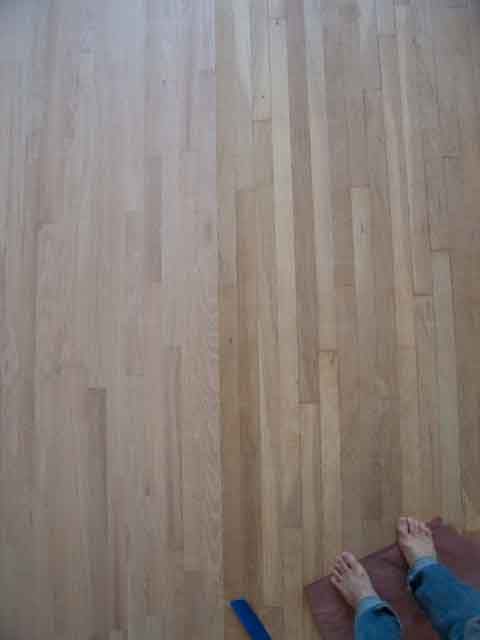I have a specific question about staining and/or color matching new red oak to old. This inquiry is pulled out of a longer post for clarity.
Intervention Tips: Improve on Landlord's El Cheapo(!) Job?
intervention-tips-improve-landlord-cheapo-job-t7055.htmlHere's a (darkish) photo. New replacement red oak is on the left.

Is applying stain a mistake? Initially I had eliminated this option as too complicated/difficult to pull off. But if going with a waterbase, I figure I'd rather the floor be darker in tone. I was hoping to sand (using ROS or vibrating ) over the recent filler spots & slight swirl defects, then borrow the building’s buffer and install a 100 grit screen + red backing pad (under the white pad) and give it a final once over to unify the surface roughness. The bedroom floor looks surprisingly good except for the occasional ‘cigar’ defects (these are not too deep, but they are there). I’m sure when the finish is on the defects will become more glaring. Again, this is a salvage job.
Btw, I wasn't expecting the new wood to match the old, and I am surprised by how good the repair looks (the wood is straight!...and flat! trust me, I thought they would screw that up). However, all it would have taken was a few boards with varied tones mixed in and the repair would have been visually unified.
Is there any way to easily darken the new red oak a tone or two so it blends a little better with the floor? I will be using Drifast stain, a middle tone brown or blend. I have read it is not wise to apply more than one wiped off coat of stain.
How do most apply Drifast stain, with an applicator pad or rag?
Thanks.




